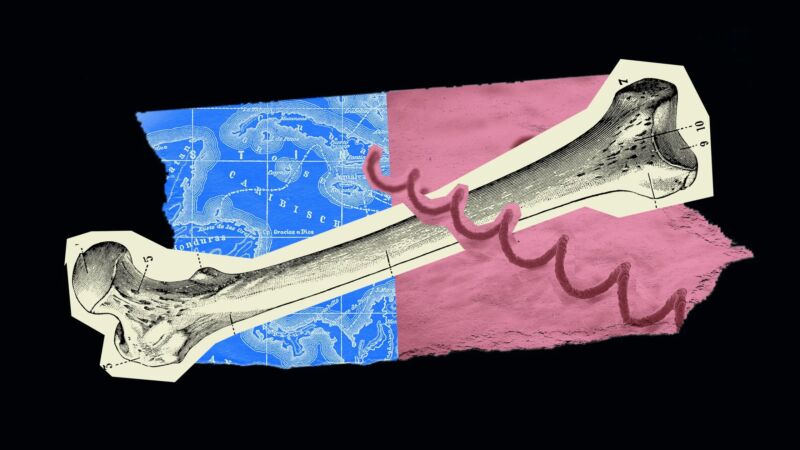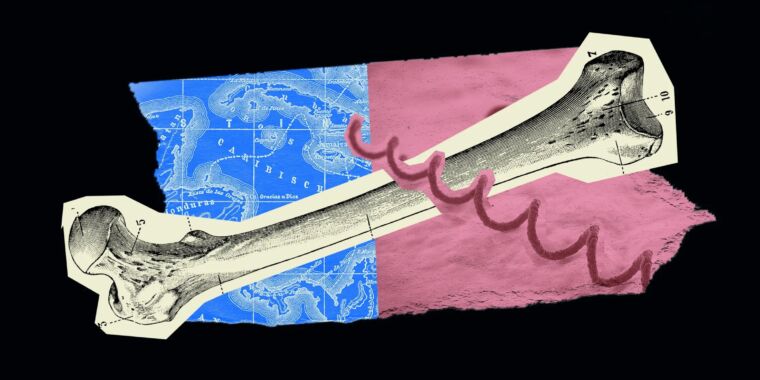
In the last days of the 1400s, a terrible epidemic swept through Europe. Men and women spiked sudden fevers. Their joints ached, and they broke out in rashes that ripened into bursting boils. Ulcers ate away at their faces, collapsing their noses and jaws, working down their throats and airways, making it impossible to eat or drink. Survivors were grossly disfigured. Unluckier victims died.
The infection sped across the borders of a politically fractured landscape, from France into Italy, on to Switzerland and Germany, and north to the British Isles, Scandinavia, and Russia. The Holy Roman Emperor declared it a punishment from God. “Nothing could be more serious than this curse, this barbarian poison,” an Italian historian wrote in 1495.

Out of the chaos, several things became clear. The infection seemed to start in the genitals. The pathogen seemed to travel along the paths of mercenary soldiers hired by warring rulers to attack their rivals, and with the informal households and sex workers that followed their campaigns. Though every nation associated the disorder with their enemies—the French called it the Neapolitan disease, the English called it the French disease, the Russians blamed the Poles, and the Turks blamed Christians—there came a growing sense that one nation might be responsible.
It seemed plausible that the great pox, later called syphilis, might have journeyed with Spanish mercenaries, who represented much of the army of Naples when France attacked that kingdom in 1495. And it might have arrived in Spain with the crews of Christopher Columbus, who returned there in 1493 from the first of his exploratory voyages.
For most of the centuries since, a significant historical narrative has blamed Columbus and his sailors for bringing syphilis to Europe. It arrived as a ravaging plague and then adapted to become a long-simmering disease that, before the discovery of penicillin, could cripple people and drive them mad. Investigating what’s called the “Columbian hypothesis” has proved challenging: The symptoms related in old accounts could describe several diseases, and the bacterium that causes it, Treponema pallidum, was not identified until 1905.
But for roughly two decades, paleopathologists examining European burial sites have suggested that medieval bones and teeth display signs of syphilis infection, disrupting the belief that the disease arrived there in the 15th century. Now, a team based in Marseille has used ancient-DNA analysis to reveal evidence of Treponema bacteria, and the body’s immunological reaction to it, in a skeleton that was buried in a chapel in Provence in the 7th or 8th century. It’s the best evidence yet that syphilis—or something related to it—was infecting Europeans centuries before Columbus sailed.
“To the best of my knowledge, this is the first, proven, strong piece of evidence that the Treponema of syphilis were circulating in the European population before Columbus,” says Michel Drancourt, a physician and professor of microbiology at Aix-Marseille University, who led the work published in the Journal of Infectious Diseases. “So far, this was a hypothesis in science and the medical literature, without any strong proof.”
Of course, as with anything in science, one finding doesn’t settle the question. It’s clear the historical record describes a catastrophic epidemic coincident with Columbus’s return. And there have always been other diseases caused by subspecies of Treponema bacteria—notably yaws, caused by T. pallidum pertenue, which passes skin-to-skin instead of through sexual contact, and mostly occurs in children. But, at least, the new identification adds narrative strands to the established story of syphilis’s global travel—without quite taking the responsibility off the famous colonizer’s back.
“It’s exciting that greater complexity is being introduced progressively by this work, and by some securely dated and accurately diagnosed ancient skeletons that have been published since 2016,” says Molly Zuckerman, a biological anthropologist and professor at Mississippi State University who collaborates on studies of ancient infections. “When we look at modern disease landscapes, we understand that a lot of the time we have co-circulating strains of diseases. If the origin of syphilis hadn’t been set up initially against the backdrop of the Columbian Exchange, we might have recognized that sooner.”








